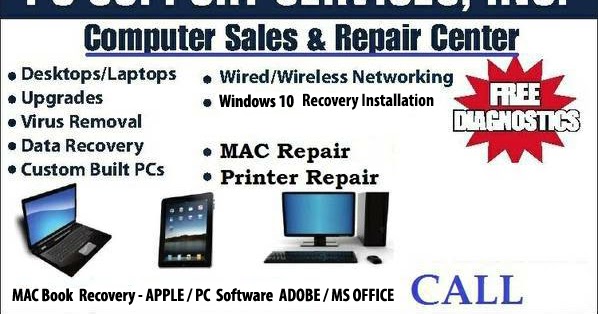

- COULD NOT UNMOUNT DISK MACBOOK AIR MAC OS
- COULD NOT UNMOUNT DISK MACBOOK AIR PORTABLE
- COULD NOT UNMOUNT DISK MACBOOK AIR PRO
- COULD NOT UNMOUNT DISK MACBOOK AIR MAC
- COULD NOT UNMOUNT DISK MACBOOK AIR WINDOWS
I then went to Finder and did an Eject, though I'm sure I could have done that manually. The command First Aid ran is fsck_hfs -fy -x /dev/disk2s2

It runs with a -fy -x rather than just -y. I noticed that First Aid runs fsck but with different options than what was running automatically. Then in the Disk Utility I selected external disk drive and ran First Aid.Īfter First Aid completed, about 2 hours later I was able to Mount the disk through Disk Utility. That stopped the fsck that had made the disk busy. In terminal I ran - ps aux | grep fsck followed by sudo pkill -f fsck The reason it was busy was that fsck ran as soon as I plugged the disk in. Along the same lines, if you want to remount a drive you can.
COULD NOT UNMOUNT DISK MACBOOK AIR MAC
For many users, the easiest way to unmount a drive in Mac is to either just drag a volume into the Trash, use the eject keys, disconnect the drive, or use one of the force eject methods.
COULD NOT UNMOUNT DISK MACBOOK AIR MAC OS
I tried the various fixes suggested to do it manually in Terminal. You can mount and unmount drives, volumes, and disks from the command line of MacOS and Mac OS X.

Had the same issue and have been fighting it for days. If you want to preserve the volume as opposed to erase the drive, here are steps. (Drive originally formatted/used on an High Sierra Mac.) Also tried an iMac which refused to mount it.
COULD NOT UNMOUNT DISK MACBOOK AIR WINDOWS
Create Windows 11 Bootable Disk Using Boot Camp (Intel Macs) The first. To begin, you must open the Terminal application. Mac M1 does not support Windows 11 natively yet so the only way is the parallels.
COULD NOT UNMOUNT DISK MACBOOK AIR PRO
I've done all of the above several times.Īny ideas for untrashing this 2TB Seagate drive? Using a MacBook Pro with High Sierra. You can also try to fix the couldn’t unmount disk mac OS problem by using the command line to force the disc to be unmounted.

When I try to reboot, the desktop icons disappear, the reboot never finishes and I end up forcing a shutdown via the power button. Try relaunching Finder by control+option+clicking on the Finder icon in your Dock and selecting. resulted in "Unmount of disk2 failed: at least one volume could not be unmounted." Montreal, QC 2 Usually this error means that some file on the partition is in use. which resulted in an error that it was already unmounted or "has a partitioning scheme so use 'disk util unmountDisk' instead" which resulted in an error -69888: Couldn't unmount disk. Sudo diskutil eraseDisk JHFS+ Reformat /dev/disk2 Disk Utility failed to unmount the Data partition and reported the TM partition was OK, but I can't eject either without issues: When fsck reports that your volume is OK, type reboot at the prompt and then press Return.Trying to reformat a drive that was used for an employee's Time Machine and Data storage. *** Important: If this message appears, repeat the fsck command you typed in step 2 until fsck tells you that your volume appears to be OK (first-pass repairs may uncover additional issues, so this is a normal thing to do).Ĥ. If fsck found issues and has altered, repaired, or fixed anything, it will display this message: Once it finishes, it'll display this message if no issue is found: fsck will go through five "phases" and then return information about your disk's use and fragmentation. At the command-line prompt, type /sbin/fsck -fyģ.
COULD NOT UNMOUNT DISK MACBOOK AIR PORTABLE
If your portable computer doesn't restart with this method, you may need to reset the Power Manager.Ģ. On portable computers, simultaneously press the Command-Control-power keys. On desktop computers, you can do this by pressing the reset/interrupt button (if there is one) or holding down the power button for several seconds. Hold CMD+s keys down at bootup. Note: If necessary, perform a forced restart as described in the Emergency Troubleshooting Handbook that came with your computer. and tap on the Apple ID/iCloud tab at the top, which also has your name. Start up your computer in single-user mode to reach the command line. You can face this problem because of not updating your device for a long time. The command sudo diskutil unmountDisk force /devdisk0 failed because at least one volume could not be unmounted. The diskutil list command brought up just /dev/disk0 (plus disk0s1, disk0s2 and disk0s3). The Terminal application (/Applications/Utilities) and single-user mode are two examples of command-line interfaces in which you can type such commands. The commands you will need are: diskutil list diskutil unmountDisk force /Volumes/VOLUMENAME diskutil unmountDisk force /dev/diskN If you have any questions or suggestions for new tutorial videos. Trying to erase my hard drive and it won’t unmount: Disk erase failed. Unlike using your mouse to open an application to do something, you'll need to type a text command at the prompt (#) to tell fsck what to do. To use fsck, you must run it from the command line.


 0 kommentar(er)
0 kommentar(er)
